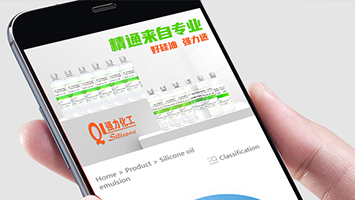Is dimethyl silicone oil (polydimethylsiloxane, PDMS) used in magnesium powder production?
Dimethyl silicone oil (polydimethylsiloxane, PDMS) is indeed widely used in magnesium powder production, mainly relying on its low surface tension, hydrophobicity, chemical stability and lubricity. The following is an analysis based on specific application scenarios, mechanism of action and practical cases:
-
Mechanism of Action: Magnesium powder is highly reactive and easily reacts with moisture and oxygen in the air to form magnesium oxide (MgO), leading to performance degradation. Dimethyl silicone oil forms a 0.004~0.01mm hydrophobic protective film on the surface of magnesium powder through physical adsorption. Its methyl groups (-CH₃) face outward, effectively blocking moisture and oxygen from contacting the magnesium powder and slowing down the oxidation rate.
-
Practical Cases: In the preparation of desulfurization powder for iron and steel smelting, mixing magnesium powder with dimethyl silicone oil followed by ball milling can significantly reduce the gas content of the desulfurization powder (H≤1 ppm, N≤40 ppm, O≤10 ppm), while increasing the desulfurization rate to 40~85%. This indicates that the silicone oil coating not only protects the magnesium powder itself but also optimizes its stability under complex working conditions.
-
Mechanism of Action: Due to its high surface energy, magnesium powder is prone to agglomeration, which affects subsequent processing (such as molding and sintering). The low surface tension (20~21 mN/m) and lubricity of dimethyl silicone oil can reduce the friction between particles, and prevent particle aggregation through the steric hindrance effect. In addition, the flexibility of silicone oil molecular chains enables them to form a dynamic lubricating layer on the particle surface, further inhibiting agglomeration.
-
Process Adaptability: In powder processing, magnesium powder is usually mixed with silicone oil at a certain ratio (e.g., 100:5~20) and heat-treated at 150~400℃ for 1~3 hours, which can significantly improve dispersibility. This method is compatible with processes such as ball milling and classification in magnesium powder production, facilitating industrial application.
-
Mechanism of Action: In the compression molding of magnesium powder (such as the preparation of magnesium alloy billets), dimethyl silicone oil can be used as a liquid binder. It enhances the bonding force between particles through physical adsorption, and reduces the friction coefficient between the mold and the powder, improving molding efficiency and billet density. For example, a patent mentioned that the magnesium-calcium ramming material using silicone oil as a binder does not require external water addition, avoiding hydration problems and making construction more convenient.
-
Performance Advantages: Silicone oil binders can decompose into volatile oligomers at high temperatures (such as during the sintering process) without remaining in the final product, ensuring the purity and mechanical properties of magnesium products.
-
The Si-O bonds and Si-C bonds of dimethyl silicone oil are not easily reactive with magnesium powder at room temperature, and it has a high flash point (usually >300℃), making it suitable for high-temperature processing links in magnesium powder production (such as atomization powder making after smelting).
-
Its non-toxic and non-corrosive characteristics meet food contact grade standards and can be used in the production of magnesium powder products with high purity requirements such as medicine and electronics.
-
The silicone oil coating can withstand a temperature range of -50~200℃, meeting the stability requirements of magnesium powder under different storage and transportation conditions. For example, in a humid environment, the contact angle of magnesium powder treated with silicone oil can reach more than 110°, significantly delaying oxidation caused by moisture absorption.
-
Silicone oil can uniformly coat magnesium powder through spraying, dipping, ball milling and mixing without complex equipment. For example, during the crushing process of Raymond mill, silicone oil is added quantitatively through a metering pump, which can simultaneously achieve crushing, dispersion and surface treatment.
-
Process Flow: After crushing limestone, fluorite, calcium carbide and graphite to 0.044~1.0mm, mix them with magnesium powder, and add dimethyl silicone oil (controlled by a metering pump at 2.5kg/h) at the same time. After ball milling into balls, the composite desulfurization powder is obtained.
-
Effect: The protective film formed by silicone oil maintains the activity of magnesium powder during the high-temperature desulfurization process, increasing the desulfurization rate by more than 13% compared with single magnesium powder, and reducing the cost by 9~13%.
-
Steps:
-
Mixing: Add magnesium powder and silicone oil at a ratio of 100:5~20 into a Henschel mixer and stir evenly at high speed.
-
Heat Treatment: Treat at 150~400℃ for 1~3 hours to fix the silicone oil molecules on the surface of magnesium powder through physical adsorption and partial chemical bonding.
-
Classification: Remove insufficiently coated particles through air flow screening or cyclone separation to obtain modified magnesium powder with excellent dispersibility.
-
The dosage of silicone oil needs to be precisely controlled. Excessive dosage may lead to decreased powder fluidity, while insufficient dosage will result in poor protective effect. For example, in desulfurization powder, the addition amount of silicone oil is usually 0.5~2% of the mass of magnesium powder.
-
For magnesium powder that needs to be processed at higher temperatures (>200℃), crosslinking modification can be carried out through hydrosilylation reaction or introduction of vinyl-containing silicone oil to form a more high-temperature resistant elastic coating.
-
The use of degradable silicone oil derivatives or supercritical CO₂ as the dispersion medium can reduce the use of traditional organic solvents, in line with the trend of green production.
The application of dimethyl silicone oil in magnesium powder production fully reflects its multifunctional synergy: surface coating to achieve anti-oxidation and anti-agglomeration, lubricity to improve processing performance, and chemical stability to adapt to complex working conditions. Its technical advantages have been verified in fields such as iron and steel desulfurization and magnesium alloy preparation. In the future, with the development of modification technology, the application potential of silicone oil in the production of high-end magnesium powder (such as spherical magnesium powder for electronic packaging) will be further released.





